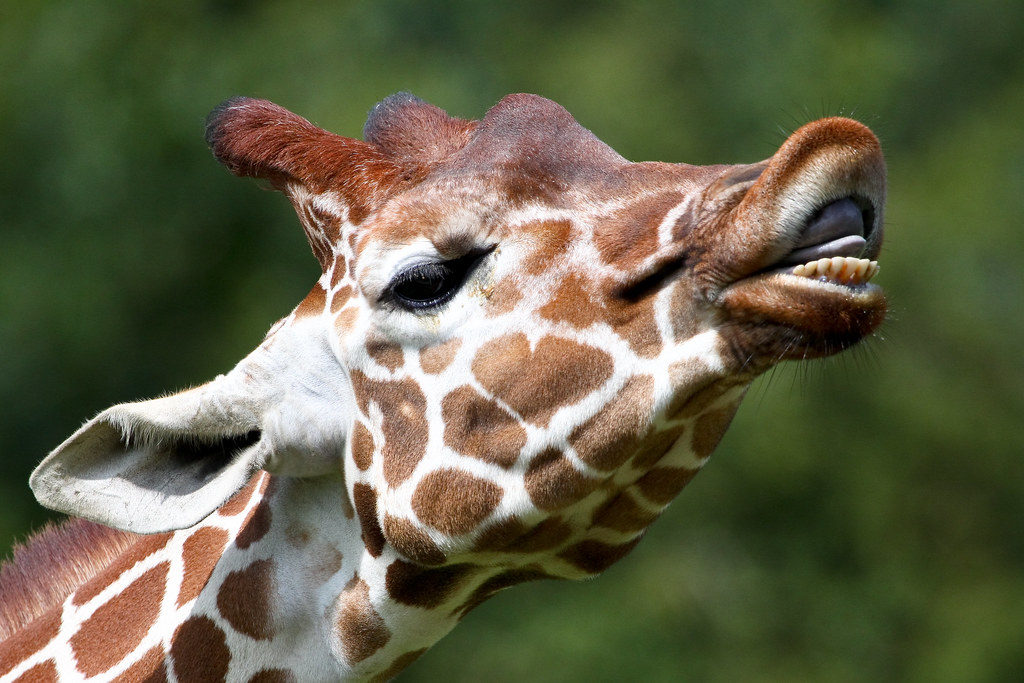Have you ever had the privilege of encountering the majestic giraffe in person? If you’ve had the chance to visit a zoo or witness these incredible creatures in the wild, their towering presence is undoubtedly etched in your memory. With their remarkable height, giraffes are the tallest land mammals on the planet, easily exceeding 18 feet in length for males (bulls) and around 15 feet for females (cows). These awe-inspiring animals are commonly found across African savannas and woodlands, particularly in Tanzanian parks and reserves. What sets them different is their elongated necks, which can stretch up to an impressive 7 feet.
This distinctive feature not only allows them to access food sources from tall trees that other herbivores cannot reach, granting them exclusive feeding grounds, but it also bestows them with enhanced predator awareness. The giraffe’s neck, a wonder of nature, can weigh as much as 600 pounds. As we delve into the fascinating world of giraffes, let’s uncover the intriguing secrets of their dental structure. We will discuss the answer to the query: Does a giraffe have teeth?
Does A Giraffe Have Teeth?: The Unconventional 32 Teeth
Curiosity leads us to the question: Does a giraffe have teeth? If yes, then how many? In a manner akin to humans, giraffes have a dental count of 32. Yet, the placement of these teeth is unlike what we’re accustomed to. Most of their teeth are situated towards the back of their mouths, a departure from the typical arrangement in other mammals.
However, giraffes don’t employ their front teeth for consuming food. Instead, they employ their lips to grasp leaves and twigs, using their remarkably lengthy tongues to usher the vegetation into their mouths. Once there, they regurgitate the food, utilizing their back teeth for chewing before swallowing. Intriguingly, giraffes lack upper front teeth, an anomaly that may initially seem perplexing. However, considering their dietary habits and specialized feeding mechanisms, this absence is of little consequence.
The Anatomy of Wonder: Giraffe’s Tongue and Feet
Given the grandeur of giraffes, it’s only fitting that their internal structures are equally impressive. Their tongues, for instance, can measure an astonishing 21 inches in length, a testament to the remarkable adaptations nature has crafted. Furthermore, their feet span an average width of 12 inches. Such dimensions harmonize with their stature, enabling these creatures to navigate their environments with grace and efficiency.
Unveiling Giraffe Teeth Aesthetics
One might ponder if a giraffe’s teeth mirror the elongation evident in their necks and legs. Indeed, their teeth do exhibit a certain length, particularly the visible roots. Despite their majestic appearance, giraffes have slender heads, leading to comparatively narrower molars when compared to many other mammals.
Decoding the Diversity of Giraffe Teeth Types
The allure of giraffe teeth lies in their unique adaptations. While some might envision long canines, the reality is that these creatures possess remarkably elongated incisors. The majority of their teeth, however, take the form of molars strategically positioned at the rear of their mouths. Additionally, giraffes forgo upper front incisors, lending their lips a distinct appearance that might appear larger than they truly are.
The Puzzle of Giraffe Grins: Understanding the Absence of Upper Incisors
Casual online observers of giraffes often spot images capturing their apparent smiles. A swift glance reveals a set of even lower teeth, while the upper front teeth remain conspicuously absent. This phenomenon stems from the fact that giraffes, like cows and fellow cud-chewing ungulates, lack upper incisors altogether.
The Harmony of Adaptation: A Symphony of Form and Function
In the realm of nature’s wonders, giraffes are prime examples of adaptation at its finest. Their elongated necks serve as telescopic marvels, facilitating access to sustenance while offering a vantage point against potential threats. A closer examination of their dental structure reveals a harmony between their specialized feeding habits and the absence of upper front teeth. This interplay of adaptations paints a portrait of a species that has evolved in synchrony with its environment.
Conclusion: Does A Giraffe Have Teeth?
The world of giraffes extends far beyond their towering presence; it’s a realm of adaptations that captivates the curious minds of those seeking to understand the natural world’s intricacies. From their elongated necks to their unique dental structure, these gentle giants exemplify the unparalleled artistry of evolution. The absence of upper front teeth, far from being a puzzle, is a testament to the exquisite balance between form and function in the tapestry of life. So, the next time you gaze upon a giraffe, remember the hidden stories within their smiles and the wondrous mechanisms that sculpt their lives.



